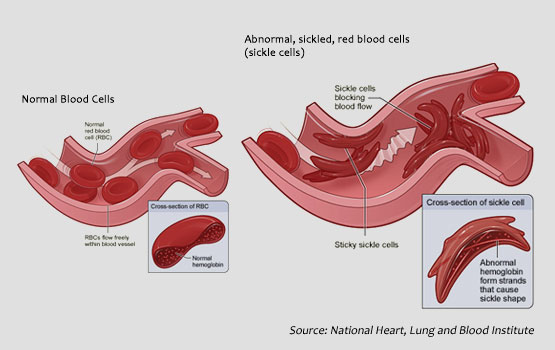"For the life of the flesh is in the blood." Leviticus 17:11
Amoebyctes/hemocytes: just think about that there are amoeba like white blood cells crawling around in your body right now. Then think about that that's these amoebycte blood is the only kind of blood some invertebrates have! Check it out!
There's an extraordinary variety of life giving blood in the world. Enjoy!
Blue Blood: our blood, of course, is red because of iron. Many insects, crustaceans, arthropods and mollusks use a different metal to cause oxygen to be reversibly bound - copper called hemocyanin (these proteins with metal in them are cleverly known as metalloproteins). When unoxygenated, it's a boring grayish, but pepper it up with some oxygen and things get an exciting blue/green.
 |
| This hue is apparently from hemocyanin (copper/blue blood) |
Anucleated: so, I knew that our human blood cells didn't have nucleuses, but what I did not know is that we're the exception and not the rule. Almost all other vertebrates aside from mammals (more on exceptions later) have red blood cells that contain nuclei. So, why have mammals evolved an awesome mechanism to expunge their nucleus at the right moment of red blood cell development (which I'd totally love to know more about that mechanism. Please post if you know)? Well, it kind of just takes up space. The one and only job of red blood cells is to transport oxygen (to other cells) and carbon dioxide (away from cells) and anything else is just a waste. Having small red blood cells also makes small capillaries possible which can mean much better diffusion of gases. Since nothing's perfect the downside to this method of making red blood cells is that they have a limited ability to repair and create energy (since they have no DNA nor mitochondria).
Blood Without Blood Cells: It's kind of like bloodless blood or blood lite, but it's a way of saving metabolic energy. There are certain circumstances that are oxygenated enough that the organism doesn't need the help that blood cells provide (either hemoglobin or hemocyanin). Many insects are small enough that diffusion through their spiracles (kind of like body vents) does the trick. Another AMAZING exception is the crocodile icefish of the Antarctic waters. It's so cold and the water is so oxygenated that it simply doesn't need red blood cells and simply has clear blood. That's awesome!!! The other exciting thing is that we can sequence the genome of these fish and see that the genes for red blood cells are there, but mutated. Go evolution!
 |
| Crocodile Icefish |
Vanadium Filled Blood: first you should know that Vanadium is a very rare element, hence probably why you don't know crap about it (much like me). Tunicates and some sea cucumber have high concentrations of vanadium - as high as 1 million times that of the sea water around them. Hypotheses vary on what it may be good for - toxin, oxygen transporter or other.
 |
| Some sea squirts/tunicates are pretty! |
Deformed Red Blood Cells: yes, you've heard of sickle cell anemia and know that it's bad because the red blood cells aren't as flexible as they need to be (since capillaries are 25% smaller than red blood cells and they have to squeeze through) and they can get clogged. You probably also know that it's a defense advantage for dealing with malaria. One of the reasons is that cells with the sickle mutation look normal until they have low oxygen levels and then they change into the abnormal shape (that's why flying can be dangerous for people with sickle cell anemia). If a cell is infected with plasmodium (the protist that causes malaria) its oxygen level drops, it then turns sickle shaped and is subsequently consumed by white blood cells - malaria's gone! Unusual shapes like fusiform, lanceolate, crescentic, and irregularly polygonal can also be seen in the elk of North America and their counterpart, the red deer of Europe. I couldn't find why, but I would bet good money this is another parasite defense since the draw backs to these shapes can be severe (ask any person with sickle-cell anemia).
Anucleated Amphibian Blood: as we've said earlier, amphibians almost always have red blood cells that have nuclei. There's an exception and one that makes sense - some lungless salamanders. Let's say you're a salamander and here's your problem: you've evolved away your lungs because you're small enough to not need them, but then you need to evolve to be bigger again or to be more active. How do you do it? Make your blood more efficient and ditch the nuclei of your red blood cells!
 |
| http://en.wikipedia.org/wiki/File:Kaldari_Batrachoseps_attenuatus_01.jpg |


No comments:
Post a Comment
Please comment! You can comment anonymously! Please send ideas and topics to research and post on!!!